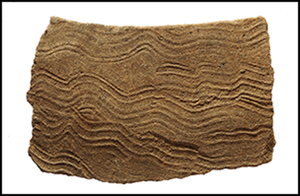Crossref Citations
This article has been cited by the following publications. This list is generated based on data provided by
Crossref.
Badura, Monika
Lityńska-Zając, Maria
Makohonienko, Mirosław
and
Zagórska-Marek, Beata
2022.
Archaeobotanical Studies in Poland – Historical Overview, Achievements, and Future Perspectives.
Acta Societatis Botanicorum Poloniae,
Vol. 91,
Issue. ,
García-Granero, Juan José
Suryanarayan, Akshyeta
Cubas, Miriam
Craig, Oliver E.
Cárdenas, Marc
Ajithprasad, P.
and
Madella, Marco
2022.
Integrating Lipid and Starch Grain Analyses From Pottery Vessels to Explore Prehistoric Foodways in Northern Gujarat, India.
Frontiers in Ecology and Evolution,
Vol. 10,
Issue. ,
Bofill, Maria
Aceituno, Francisco J.
Portillo, Marta
López-Dóriga, Inés
Camarós, Edgard
Cueto, Marian
Teira, Luis C.
and
Sureda, Pau
2023.
The stone connection: Functional and microbotanical analysis of prehistoric macrolithic tools on the island of Formentera (Balearic Archipelago).
The Journal of Island and Coastal Archaeology,
Vol. 18,
Issue. 4,
p.
584.
Le Moyne, Charles
Roberts, Patrick
Hua, Quan
Bleasdale, Madeleine
Desideri, Jocelyne
Boivin, Nicole
Crowther, Alison
and
Hart, John P.
2023.
Ecological flexibility and adaptation to past climate change in the Middle Nile Valley: A multiproxy investigation of dietary shifts between the Neolithic and Kerma periods at Kadruka 1 and Kadruka 21.
PLOS ONE,
Vol. 18,
Issue. 2,
p.
e0280347.
Briggs, Lisa
Cooper, Jago
Craig, Oliver E.
Heron, Carl
Lucquin, Alexandre
Milantchi, María Mercedes Martínez
and
Samson, Alice
2023.
Molecular evidence for new foodways in the early colonial Caribbean: organic residue analysis at Isla de Mona, Puerto Rico.
Archaeological and Anthropological Sciences,
Vol. 15,
Issue. 5,
Varadzinová, Lenka
Varadzin, Ladislav
and
Ambrose, Stanley H.
2023.
New radiocarbon dates for postglacial reoccupation of the Sudanese Nile.
Quaternary Science Reviews,
Vol. 303,
Issue. ,
p.
107953.
Spagnolo, Vincenzo
and
Garcea, Elena A.A.
2023.
From settlement patterns to memory of place among Holocene hunter-gatherers at Sai Island, Middle Nile Valley.
Azania: Archaeological Research in Africa,
Vol. 58,
Issue. 2,
p.
161.
Valancius, Mantas
Quinn, Patrick
Brass, Michael
Vella Gregory, I.
Adam, Ahmed
Dunne, Julie
and
Evershed, Richard P.
2024.
Production and Use of Ceramics in the First Millennium BC: Jebel Moya, Sudan.
African Archaeological Review,
Vol. 41,
Issue. 1,
p.
97.
Capasso, Giusy
Neves, Dulce
Sperduti, Alessandra
Cristiani, Emanuela
and
Manzo, Andrea
2024.
Direct evidence of plant consumption in Neolithic Eastern Sudan from dental calculus analysis.
Scientific Reports,
Vol. 14,
Issue. 1,





